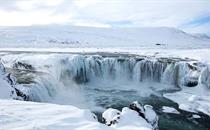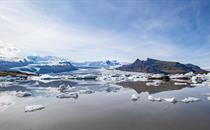FREQUENTLY ASKED QUESTIONS ABOUT ICELAND IN OCTOBER
Depending on what you want to see and where you want to go, October might be the perfect month for your holiday to Iceland. Read on to find out more with these answers to commonly asked questions about visiting Iceland in October.
How is Iceland in October?
October is a quiet time of year to visit Iceland, with more availability at hotels and fewer visitors at top attractions. By October the summer season has ended so there are fewer cars on the road, yet many top sites stay open.
There’s another benefit to visiting Iceland in October. Thanks to the balanced daylight and darkness hours, you’ll be able to combine sightseeing in the daytime with hunting for the northern lights at night. This means you can really maximise each day of your trip and do as much as possible.
What are the best things to do in Iceland in October?
Take your pick from a variety of fun things to do in Iceland in October. Since there are fewer travellers to Iceland at this time, you’ll find that certain tours have better availability, giving you greater flexibility with your itinerary.
Here are 10 of the best things to do in Iceland in October:
-
Drive along the Ring Road
-
Discover the famous Golden Circle
-
Marvel at frozen waterfalls
-
Hunt for the northern lights
-
Dip in hot springs and pools
-
Venture along the Snæfellsnes peninsula
-
See geothermal wonders and volcanoes
-
Go horse riding or on a whale watching tour
-
Walk along unusual beaches
-
Admire glacier lagoons
Cultural events in October
Iceland offers some fantastic cultural experiences in October. Reykjavík, in particular, is as lively as ever with a diverse line-up of events.
You could attend the Reykjavík International Film Festival (RIFF). This is an exciting time for movie buffs, with film workshops, discussion panels and screenings taking place from the end of September to mid-October.
Or witness the lighting of the Imagine Peace Tower, Yoko Ono’s memorial for John Lennon. Every year on his birthday, 9 October, the tower is switched on. It projects a light pillar up to 4 kilometres (2.5 miles) into the sky above.
Good to know: If you’re unsure about what you want to do in Iceland, don’t worry. Our Iceland experts are based in Reykjavík and know the country inside out. They’ll help you see Iceland your way, tailoring your itinerary by adding all the best excursions and experiences to suit you.
What are the best places to visit in Iceland in October?
The best places to visit in Iceland in October include waterfalls, hot springs, geothermal sites, glaciers and more. If you’re coming to hunt for the northern lights, head to remote locations where there is less light pollution. There are evening tours that can take you there from the capital, Reykjavík.
Here are some of the best places to visit in Iceland in October:
-
-
-
Visit the village of Vík to see the interesting rock formations of
Dyrhólaey
-
Watch icebergs bobbing on the
Jökulsárlón glacier lagoon
-
-
See the “Capital of North Iceland”,
Akureyri
-
-
To keep occupied whilst in the capital, you may want to explore some of these fun indoor attractions too:
-
Learn about volcanoes at the Lava Centre
-
Try a flight simulation experience with FlyOver Iceland
-
Experience earthquakes and visit the planetarium at Perlan
Where you go in Iceland depends on how much time you have to spend. If you are only staying for a few days, your best bet is to explore Reykjavík and the surroundings.
Want to spend a week or longer in Iceland in October? Then you’ll have time to journey around the country in a full circle to reach its many beautiful corners. As well as the southern and western regions, you can explore the east and north of Iceland too.
What is the weather like in Iceland in October?
October is the beginning of winter in Iceland. On average there are highs of 7°C (45°F) and lows of 3°C (37°F). There may be rainy days during your Iceland holiday in October, with an average of 30mm of rainfall. It can also get quite windy.
The weather in Iceland is unpredictable, so prepare for sun, wind and rain if you’re planning a trip for October!
What is the temperature in October in Iceland?
In Reykjavík the average temperature in October is 6°C (42°F). In Akureyri it is 5°C (41°F). Generally Iceland experiences highs of 7°C (45°F) and lows of 3°C (37°F) in October.
On average, there is 2 hours of sunshine every day in October.
Does it snow in Iceland in October?
It is not usual to get snow in Iceland in October, although it is not impossible! You may see a dusting of snow on the mountaintops, but rarely does it settle at lower altitudes in October.
What are the driving conditions in Iceland in October?
A road trip in Iceland in October has its advantages. At the start of winter, there's lighter traffic for driving around the Ring Road. This is one of the great things about exploring Iceland in the shoulder season – fewer visitors!
Since the weather is changeable in Iceland, it is important to come prepared for winter driving. Make yourself aware of road safety precautions before you travel. For example you must drive slowly in cold weather to avoid unseen ice, and turn your headlights on, day and night.
During your trip check weather and road conditions regularly. For your peace of mind, our team is on hand 24/7 should you need to get in touch at any point.
When you book a self-drive tour with Nordic Visitor, your car rental comes with collision damage waiver, unlimited in-car Wi-Fi, and a hand-marked map of your route. You also get two named drivers on the insurance policy so you can share the driving with a travel companion.
What to pack for a trip to Iceland in October?
Iceland is famous for its ever-changing weather, so we advise that you be as prepared as possible. As October falls at the start of winter, we recommend bringing warm layers to be ready for the cooler temperatures. That way you can enjoy the natural beauty of the country regardless of the weather.
Here is a list of packing essentials for your Iceland trip in October:
-
An insulated or warm down jacket (it’s best if it is also waterproof)
-
Fleece jumpers
-
Lightweight wool underlayers
-
Waterproof or winter trousers
-
Gloves
-
Scarves
-
Warm hat
-
Thermal underwear and socks
As well as these essentials, be sure to bring good sturdy walking or hiking boots depending on what activities you may want to enjoy. Also, if you’re keen to experience the famous Blue Lagoon, remember to pack your swimwear and sandals.
What to wear in Iceland in October?
Icelanders have a saying: “There is no such thing as bad weather, just bad clothing.”
In October you can expect cold weather. For that reason, you should dress with warm layers to be ready for anything. That way you can enjoy the beautiful sights without worrying about the temperatures and conditions.
Make sure to be dressed with an insulated winter jacket and warm under layers, as well as good sturdy boots.
What are the daylight hours in Iceland in October?
The hours of daylight in Iceland vary significantly from the beginning to the end of October. You can expect 11 hours of daylight in the first few days in October, and 8 hours at the end of the month.
On 1 October in Reykjavík, the sun rises at approximately 7:30 AM and sets at around 6:50 PM. In Akureyri the sun rises at 7:20 AM, and sets at 6:40 PM.
By the end of October, there are fewer daylight hours in Iceland. In Reykjavík the sunrise takes place at about 9:10 AM and sunset at 5:10 PM. In Akureyri the sunrise occurs at around 9 AM and sunset at 4:45 PM.
Can I see the northern lights in Iceland in October?
Yes, it is possible to see the northern lights in Iceland in October. In order to spot the colours of the aurora borealis, you need a clear dark sky. In winter the nights are longer and darker than in summer. That’s why the best time to visit Iceland for northern lights tours is between October and April.
Due to the unpredictable nature of the northern lights, we unfortunately cannot promise you will see them on our tours. But the aurora is a natural marvel that continues to inspire awe and delight, and is definitely worth putting on your travel bucket list.
How to tour Iceland in October?
There are various ways to travel on your Iceland tour in October. Depending on your personal tastes and requirements, you could either go for a guided or self-guided vacation.
Road trips in October
For a self-guided journey through Iceland, you could opt for a road trip adventure. There are many self-drive tour routes to choose from in October. For shorter stays we recommend driving the Golden Circle in South Iceland or exploring the Snæfellsnes peninsula in the West.
If you have a week or more to spend in Iceland, drive around the Ring Road for a full loop of the country. This way you can visit virtually all the stunning corners of Iceland in one trip!
Multi-day tours in October
Another way to see Iceland on an independent tour is to base yourself in one or two locations, such as Reykjavík and Akureyri. You can then explore Iceland’s highlights on day trips.
A multi-day tour of Iceland is a great way to combine solo travel with guided excursions. You can fill your itinerary with as many tour-led activities as you wish!
Privately guided tours in October
On the other hand, you might prefer to be accompanied by a local expert throughout your Iceland experience. If so we recommend opting for a privately guided tour to have your own personal guide show you the best attractions. This is one of the most exclusive ways to see Iceland.
Small group tours in October
Or you could discover Iceland with like-minded visitors as part of a small group tour. You’ll get to meet people from around the world and learn from the expertise of a local guide, who will show you the most beautiful and fascinating parts of Iceland.
Our small group tours of Iceland in October range from 4 to 10 days in duration, taking you to various locations in the country. You could visit the popular south coast or travel around the Ring Road for an in-depth tour.
Good to know: Whichever of these travel styles you choose, you’ll get all the signature Nordic Visitor benefits. These include access to our 24/7 helpline, a detailed personal itinerary, helpful travel guide and daily breakfast.
Nordic Visitor will book all your accommodation, and you can add extra nights and activities to your itinerary too.
Scroll down to learn more about Nordic Visitor’s services.




























